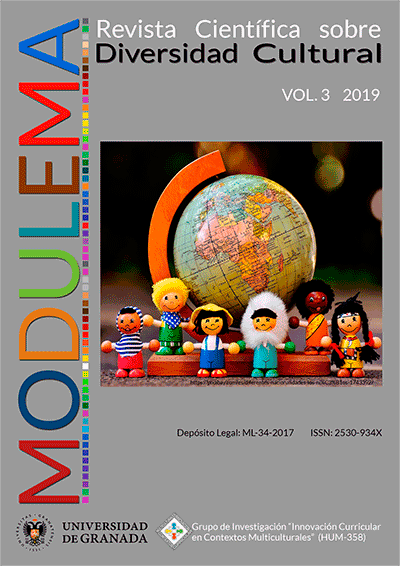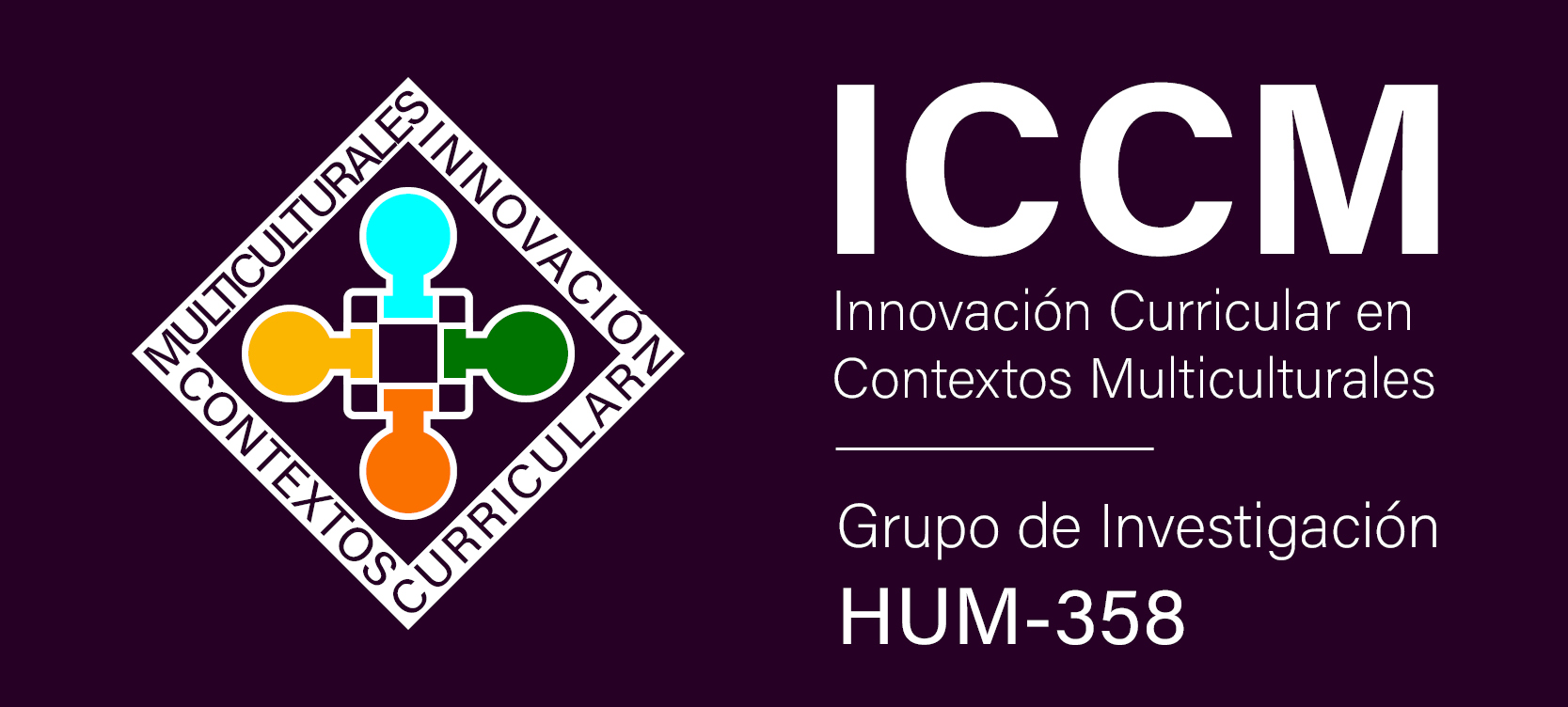WHAT IS THE STATUS OF EDUCATION FOR PEACE IN TODAY’S SCIENTIFIC ENVIRONMENT?
DOI:
https://doi.org/10.30827/modulema.v3i0.9249Keywords:
Peace education, Sustainable development, Global Citizenship, EducationAbstract
Education for peace must be a priority theme in today’s multicultural society,as it is one of the Sustainable Development Goals set out in Agenda 2030 (UN, 2015). This research shows a state of the art on the scientificarticles published on peace education during five years (2013-2017). Themethodology applied has been descriptive through qualitative techniquesprovided by the qualitative data analysis software Nvivo. A total of 44articles obtained from the following databases were analyzed: Scopus,Proquest, Web of Science and Dialnet. The results indicate an increase in the number of studies on this issue and the need to promote an education centeredon peace and equality from the educational sphere. In conclusion, the importanceof educating for peace is becoming increasingly important in the face of the needto form global citizens.Downloads
References
Abay, A. C. (2018). Desarrollo y nuevo pacto social: la cultura de paz y la capacitación en mediación de conflictos a las nuevas generaciones de profesionales. Estudios del Desarrollo Social: Cuba y América Latina, 7(1), 183-192.
Amin, S., Jummani, N. B., Mahmood, S. T., Raziq, K., y Babar, M. A. K. (2016). Peace Education Practices in Pre-Service Teacher Training Programs: and Analysis. European Scientific Journal, ESJ, 12(25), 323-330.
Aristóteles (2014). Ética a Nicómaco. Madrid: Alianza.
Bandini, G. (2016). «Haz el amor, no la guerra». Experiencias de vida. Aula, 22, 175–188.
Behr, Hartmut. (2014). Politics of Difference – Epistemologies of Peace. London: Routledge
Behr, H., Megoran, N., y Carnaffan, J. (2018). Peace education, militarism and neo-liberalism: conceptual reflections with empirical findings from the UK. Journal of Peace Education, 15(1), 76–96. https://doi.org/10.1080/17400201.2017.1394283
Bing, A. (1989). Peace Studies as Experiential Education. ANNALS, American Academy of Political and Social Science, 504, 48–60
Bourn, D. (2014). The Theory and Practice of Global Learning. London: Development Education Research Centre.
Buck, B. (2016). Culturally Responsive Peace Education: A Case Study at One Urban Latino K-8 Catholic School. Journal of Catholic Education, 20(1), 32.
Cabedo-Mas, A. (2015). Challenge and perspectives of Peace Education in Schools: The Role of Music. Australian Journal of Music Education, 1(1), 75–85.
Cerdas-Agüero, E. (2015). Desafíos de la educación para la paz hacia la construcción de una cultura de paz. Revista Electrónica Educare, 19(2), 135–154.
Díaz, F. A. G. (2017). ¿Educación para la paz? Revista Educación y Desarrollo Social, 11(2), 5–19.
Fisas, V. (2011). Educar para una cultura de paz. Quaderns de construcció de pau, 20, 7-24.
Galtung, J. (1998). Tras la violencia, 3R: reconstrucción, reconciliación, resolución. Bilbao: Bakeaz-Gernika Gogoratuz.
Gómez, A. (2015). Peace education in Israel: an educational goal in the test of reality. Journal of Peace Education, 12(2), 138–153.
Harris, I. (2002). Conceptual Underpinnings of Peace Education. En G. Salmon y B. Nievo, Peace education: The Concept, Principles, and Practices Around the World, (pp.20–27). New York: Psychology Press.
Harris, I. (2008). History of Peace Education. En G. Salomon y E. Cairns, Hand Book in Peace Education (pp.11-20). Nueva York: Psychology Press.
Hernández, I., Luna, J. A., y Cadena, M. C. (2017). Cultura de Paz: Una Construcción educativa aporte teórico. Revista Historia de La Educación Latinoamerica, 19(28), 149–172.
Hettler, S. y L. Johnston (2009). Living Peace: An Exploration of Experiential Peace Education, Conflict Resolution and Violence Prevention Programs for Youth. Journal of Peace Education 6(1), 101-118.
Ibrahim, T. (2005). Global citizenship education: Mainstreaming the curriculum? Cambridge Journal of Education, 35(2), 177–194.
Jares, X. (1999). Educación para la Paz. Su teoría y su práctica. Madrid: Popular.
Johnson, David W., y Roger T. Johnson. (2005). Essential Components of Peace Education, Theory into Practice. Peace Education, 44(4), 280–292.
Kárpava, A. (2015). Educación para la cultura de paz intercultural e inmigración bielorrusa. Profesorado. Revista de Currículum y Formación de Profesorado, 19(2), 409-427.
Kwon, S., Walker, D. I., y Kristjánsson, K. (2017). Shining light into dark shadows of violence and learned helplessness: peace education in South Korean schools. Journal of Peace Education, 201, 1–24.
Lewsader, J., y Myers-Walls, J. A. (2017). Developmentally appropriate peace education curricula. Journal of Peace Education, 14(1), 1-14
Lira, Y., y Vela Lira, H. (2014). La educación para la paz como competencia docente: aportes al sistema educativo. Innovación educative, 14(64), 123-144.
Lirola, M. M. (2016). Proposal of Activities to Promote Peace Education at Tertiary Education. Educatio Siglo XXI, 34(2), 83–102.
Lombardo, L. X., y Polonko, K. A. (2015). Peace education and childhood. Journal of Peace Education, 12(2), 182–203.
Monclús, A. (2008). La educación para la paz en una sociedad globalizada. En A. Monclús y C. Saban (Coords.), Educación para la paz. Enfoque actual y propuestas didácticas (pp.17-44). Barcelona: Ediciones CEAC.
Muñoz, F. (2001). La paz imperfecta: ante un universo en conflicto. Granada: Universidad de Granada.
Muñoz, F., y Molina, B. (2010). Una cultura de paz compleja y conflictiva. La búsqueda de equilibrios dinámicos. Revista de paz y conflictos, (3), 44-61.
Olaleye, Y. L., y Ezeokoli, R. N. (2015). Dating violence in South-western Nigeria tertiary institutions: implications for peace education. Gender and Behaviour, 13(1), 6640-6644.
Olivencia, J. J. L. (2014). La visión del profesorado sobre las misiones humanitarias y de paz en la escuela. Educatio Siglo XXI, 32(3), 99-120.
Olivencia, J. J. L. (2017). La Escuela Intercultural hoy: Reflexiones y perspectivas pedagógicas. Revista Complutense de Educacion, 28(1), 29–43.
ONU. (2015). Transformar nuestro mundo: la Agenda 2030 para el Desarrollo Sostenible. Recuperado de: http://unctad.org/meetings/es/SessionalDocuments/ares70d1_es.pdf
Ospina, J. (2010). La educación para la paz como propuesta ético-política de emancipación democrática. Origen, fundamentos y contenidos. Universitas. Revista de Filosofía, Derecho y Política, (11), 93–125.
Rivas, I. (2016). La escuela como escenario facilitador de paz: panorama de trabajos sobre una formación ética en escolares, para la construcción de mejores relaciones de convivencia dentro y fuera del aula. Educación y ciudad, (31), 107-117.
Sachs, J. (2015). The Age of Sustainable Development. New York: Columbia University Press.
Samura, F. (2013). Peace Education for Reconstruction and Peacebuilding in Postwar African Societies. African Conflict & Peacebuilding Review, 3(2), 24-46.
Sánchez, P. (1998) Derechos humanos, educación y organización escolar: cuatro alternativas. En V Congreso interuniversitario de organización de instituciones educativas. Las organizaciones ante los retos educativos del S. XXI. (Págs 599-605) Madrid: Departamento de Didáctica y Organización Escolar. Universidad Complutense de Madrid/UNED.
Santaella, E. (2016). Aportaciones de la pedagogía Freinet a la educación en España. Revista de Paz y Conflictos, 9(27), 245–261.
Sakade, N. (2010). Promoting peace in school: A case study of education for peace in England. Recuperado de: http://www.ioe.ac.uk/about/documents/about_overview/sakade_n. pdf
Synott, J. (2005). Peace Education as an Educational Paradigm: Review of a Changing Field Using an Old Measure. Journal of Peace Education, 2(1), 3–16.
Trigueros, C., Rivera, E., y Torre, E. (2011). El Chat como estrategia para fomentar el aprendizaje cooperativo. Una investigación en el Prácticum de Magisterio. Profesorado. Revista de Currículum y Formación de Profesorado, 15(1), 195-210.
Valdemoros, M., Ponce, A., y Sanz-Arazuri, E. (2011). Fundamentos en el manejo del NVIVO 9 como herramienta al servicio de estudios cualitativos. Contextos educativos: Revista de educación, (14), 11-30.
Valencia, H. (2018). Conflicto, democracia y paz. Revista Filosofía UIS, 17(1), 123-144.
Vasquez, J. (1976). Toward a Unified Strategy for Peace Education: Resolving the Two Cultures Problem in the Classroom. Journal of Conflict Resolution, 20(4), 707–728
Vellacott, J. (1988). Women, peace and internationalism, 1914–1920: Finding new words and creating new methods. En C. Chatfield, y Peter van den Dungen, Peace movements and political cultures (pp.106–124). Knoxville: University of Tennessee Press.
Vered, S. (2015). Peace education in Israel: an educational goal in the test of reality. Journal of Peace Education, 12(2), 138–153.
Wintersteiner, W. (2010). Educational Sciences and Peace Education: Mainstreaming Peace Education Into (Western) Academia? En by G. Salomon and E. Cairns, Handbook on Peace Education (pp. 45–59). New York: Psychology Press.
Wintersteiner, W. (2013). Building a global community for a culture of peace: The Hague appeal for peace global campaign for peace education (1999-2006). Journal of Peace Education, 10(2), 138–156.
Wulf, C. (2013). Human Development in a Globalized World. Education towards Peace, Cultural Diversity and Sustainable Development. Revista Española de Pedagogia, 71(254), 71–86.
Zembylas, M. (2018). Con-/divergences between postcolonial and critical peace education: towards pedagogies of decolonization in peace education. Journal of Peace Education, 15(1), 1–23.
Zinck, E., y Eyber, C. (2013). Environmental Education to Promote Peace and Cooperation: A Case Study of Tree Nurseries in Nakuru, Kenya. Children Youth and Environments, 23(1), 198-210.


















